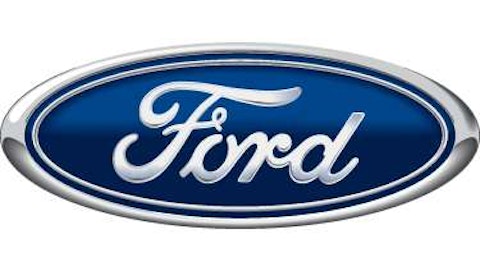China’s a big place. The world’s most populous country and second-largest economy has become a global star, ranking as the hottest emerging market and an investor target for growth, while previous top economies such as the U.S. and Europe have slowly staggered back from the recession. In China, the present is only part of the story: Growth investors have their eyes trained firmly on this nation’s massive opportunity in the future.
But just how big is that opportunity? Let’s look at five numbers that sum up China’s present and future — and just how this king of the emerging markets shapes up for investors everywhere.
1. 1.4 billion
China boasts around 1.35 billion people under its flag today, but Thomson Reuters estimates that the country’s population will only increase to around 1.4 billion by 2050. This is a country looking at a low-growth environment over the next 35 years as it modernizes and urbanizes — and it signals a major shift on how investors should look at this emerging market.
For decades, China has translated its massive population’s burgeoning potential into double-digit annual economic growth. China’s slowdown today is coming as the country faces a pair of demographic challenges that will probably prevent China from achieving its old, eye-popping annualized growth rates again. Indeed, many economists project that India will surpass China as the world’s most populous country before then.

Beijing’s one-child policy has gutted China’s youth, leaving a swelling senior population too heavily reliant on a thin corps of young, productive workers. Thomson Reuters projects that more than 20% of China’s population will be above age 65 by 2040, with that percentage growing even higher by 2050. Beijing will be forced to allot more attention and funds away from its current resource-oriented strategy — one that has given rise to massive state-owned corporations, with many of the largest listed on American markets — and toward services that can care for its elderly and increase the efficiency of its smaller working class.
Combined with a national birth trend that sees more than 120 boys born for every 100 girls — one of the highest such ratios among top economies in the world — China will be hard-pressed to bolster its youth population in the next few decades. But while that will hit the country’s long-term growth rates, China does have other statistics firmly in its favor.
2. 651.3 million
China had an estimated rural population of 651.3 million people in 2012, according to figures from the World Bank. That’s as many people as the populations of the United (NYSE:X) States, Russia, Japan, and France combined all living in China’s rural fringes that, for the most part, haven’t caught up with the country’s advances in recent decades.
Urbanization has fueled China’s growth, as some of the country’s largest cities, from Shanghai to Wuhan, have grown into metropolises large and tall enough to rival America and Europe’s biggest cities. As more and more Chinese citizens have flocked to the cities, companies both domestic and foreign have tapped into this source of new, cheap labor as a means to reduce manufacturing costs and boost their balance sheets.
But the face of China’s urbanization is changing. The cheap “made-in-China” era is coming to an end as labor costs rise and companies look for cheaper means of production. Increasingly, China’s leading companies of the future will need to tap into the nation’s growing urban population not as a source of labor, but as a massive consumer market unrivaled on a global stage. This strategy’s already paid off in a big way for international leaders in the auto industry that have tapped into China’s burgeoning auto market as the revenue base of the future.
Yum! Brands, Inc. (NYSE:YUM) is one company that’s already hitched its wagon to China’s urban potential, for better or worse: Yum! Brands, Inc. (NYSE:YUM)’s KFC and Pizza Hut brands have thrived in China’s market, but a 13% year-over-year same-store sales decline in July hammered the stock recently. Consumer stock investors should expect more hits and misses as companies look to cater to this lucrative market in the years to come.





